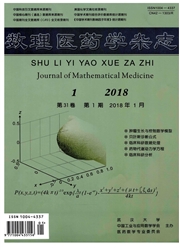

 中文摘要:
中文摘要:
目的:探讨大鼠耳蜗背核神经元第一动作电位延时的特性。方法:采用在体细胞外记录方法,通过给予单耳不同频率和声强的短纯音刺激,记录成年SD大鼠耳蜗背核神经元反应,并分别以动作电位发放数(spike counts,SC)和第一动作电位延时(first spike latency,FSL)为评价指标,分析比较它们对同一刺激的反应稳定性。结果:共记录到21个单单位(single-unit)神经元反应。这些神经元均以burst spikes这种多放电率的形式发放。以发放数为评价指标,这些神经元分别表现出单调(76%)、饱和(19%)和非单调(5%)三种声强反应。而第一动作电位延时展示出同一规律的FSL-声强反应曲线:FSL随着声强的增大而缩短。SC-频率曲线呈现多形性,而FSL-频率曲线呈"V"字型。结论:在大鼠耳蜗背核神经元,相比发放数,第一动作电位延时对同一刺激的反应稳定性更好。
 英文摘要:
英文摘要:
Objective: To evaluate the characteristics of the first spike latency in the rat dorsal cochlear nucleus.Methods: Using extracellular recording methods,we recorded the dorsal cochlear nucleus on adult SD rats by giving unilateral ear at different frequencies and intensities stimulation.Both Spike counts(SC) and First spike latency(FSL) were evaluated,then comparing their stability to the same stimuli.Results: A number of 21 single-unit neurons were recorded.SC-amplitude functions are classified as the monotonic(76%),saturated(19%) and non-monotonic(5%).While FSL show the same regular FSL-Amplitude functions:FSL reduced monotonically with the increace of amplitude.SC-Frequency curves show pleomorphism,while FSL-Frequency function display the shape of "V".Conclusion: Compared with spike counts(SC),First spike latency(FSL) can display the response of acoustic stimulation better in the rat dorsal cochlear nucleus.
 同期刊论文项目
同期刊论文项目
 同项目期刊论文
同项目期刊论文
 B ilateral cortical interaction: modulation of delay-tuned neurons in the contralateral auditory cor
B ilateral cortical interaction: modulation of delay-tuned neurons in the contralateral auditory cor First spike latency and spike count as functions of tone amplitude and frequency in the inferior col
First spike latency and spike count as functions of tone amplitude and frequency in the inferior col Recovery cycle of neurons in the inferior colliculus of the FM bat determined with varied pulse-echo
Recovery cycle of neurons in the inferior colliculus of the FM bat determined with varied pulse-echo 期刊信息
期刊信息
